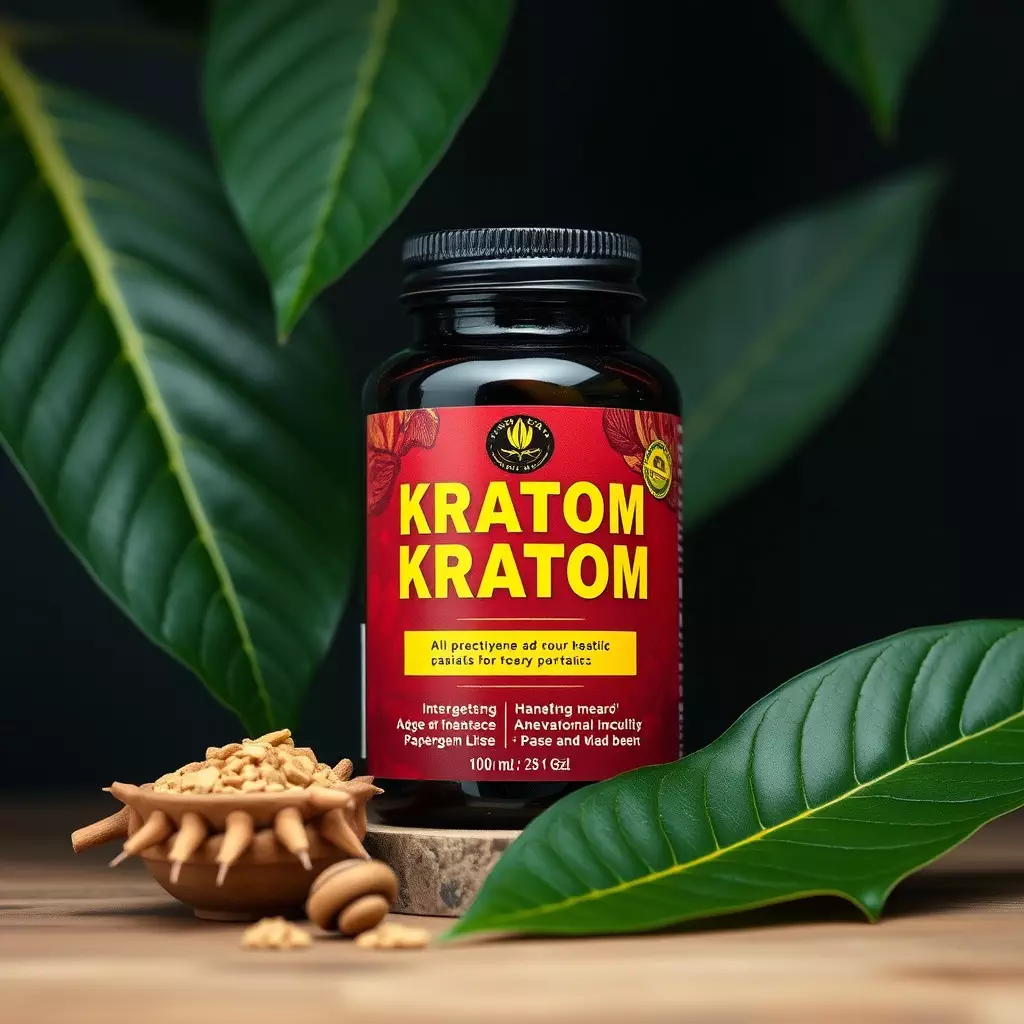Kratom, a plant from Southeast Asia, has garnered attention within athletic communities for its potential benefits in training recovery. Its alkaloids, mitragynine and 7-hydroxymitragynine, interact with opioid receptors to provide natural pain relief and anti-inflammatory effects, which may accelerate muscle healing after intense exercise. Strains like Maeng Da offer energizing and focus-enhancing properties, while Bali kratom provides calming effects that aid in post-workout recovery, particularly through improved sleep quality. Different strains of kratom have distinct alkaloid profiles; red vein varieties such as Red Bali and Red Borneo are favored for pain relief and relaxation, whereas white vein strains like White Maeng Da and White Borneo are known for their stimulating effects. The use of kratom for training recovery should be approached with caution, as it may interact with other medications and can have side effects. Safe and effective integration into a post-workout routine is contingent on responsible dosing and understanding the individual's response to the substance. Athletes considering kratom for recovery should consult healthcare professionals and balance its use with proper nutrition, hydration, and rest for optimal performance and health outcomes.
Kratom, a tropical plant from Southeast Asia, has garnered attention for its potential role in natural pain management and muscle recovery post-training. This article delves into the multifaceted benefits of kratom supplements, offering insights into how they can be harnessed to alleviate pain and accelerate athletic recovery. We explore the distinct effects of various kratom strains on pain perception in athletes, providing a comprehensive look at mitigating training-induced soreness through a holistic approach to pain relief. By examining the scientific evidence surrounding kratom’s analgesic properties, readers will gain an informed understanding of its applications in enhancing athletic performance and well-being.
- Exploring Kratom's Role in Enhancing Muscle Recovery Post-Training
- Understanding Kratom Strains and Their Impact on Pain Management for Athletes
- Mitigating Training-Induced Soreness with Kratom: A Holistic Approach to Pain Relief
Exploring Kratom's Role in Enhancing Muscle Recovery Post-Training

Kratom, a plant from Southeast Asia, has garnered attention in various health and wellness circles for its potential role in training recovery with kratom. Its alkaloids, principally mitragynine and 7-hydroxymitragynine, are believed to interact with the body’s opioid receptors, which may aid in pain management and reduce inflammation. For athletes and individuals engaged in rigorous training, muscle soreness and recovery are critical factors that can affect performance and overall wellbeing. The use of kratom supplements post-training has been anecdotally reported to enhance the body’s natural healing processes. By potentially modulating pain signals and promoting a state of calmness, kratom may facilitate more restorative sleep, which is essential for muscle repair and growth. Furthermore, strains such as Maeng Da and Bali are often cited for their balancing effects, which could be beneficial in managing the physiological stress that accompanies intense physical activity. While the scientific community continues to investigate its efficacy and safety, many users report that incorporating kratom into their post-training regimen contributes to a more efficient recovery process, allowing for quicker return to performance levels and reduced downtime between training sessions.
Understanding Kratom Strains and Their Impact on Pain Management for Athletes

Kratom, a plant native to Southeast Asia, has garnered attention within athletic communities for its potential role in training recovery with kratom. The plant belongs to the coffee family and contains compounds called alkaloids, primarily mitragynine and 7-hydroxymitragynine, which are believed to interact with the body’s opioid receptors, providing pain relief and muscle relaxation effects that can aid in recovery. There are various kratom strains, each with distinct characteristics and impacts on pain perception and overall well-being. For instance, Maeng Da kratom is known for its strong stimulating effects, which may help athletes during intense training sessions by enhancing focus and energy levels while managing pain. In contrast, Bali kratom is often favored for its sedating properties, making it suitable for post-workout recovery, where it can help alleviate soreness and promote a more restful sleep, facilitating faster muscle recovery.
When integrating kratom into an athlete’s pain management regimen, understanding the nuances of each strain is crucial. Red vein strains, such as Red Bali or Red Borneo, are typically associated with pain relief and relaxation, which can be particularly beneficial for recovery after intense training or competition. White vein strains like White Maeng Da or White Borneo are known to provide a more energetic boost, potentially improving performance and endurance while minimizing discomfort associated with exertion. Athletes should approach kratom use with caution, as it can interact with other medications and may have side effects; thus, it is essential to consult with a healthcare professional before incorporating kratom into any training recovery regimen. Proper dosing and monitoring are key to safely leveraging the benefits of kratom for pain management in an athletic context.
Mitigating Training-Induced Soreness with Kratom: A Holistic Approach to Pain Relief

Integrating kratom into a post-workout regimen can play a pivotal role in mitigating training-induced soreness, enabling more efficient recovery and preparedness for subsequent training sessions. Kratom, derived from the leaves of Mitragyna speciosa, contains alkaloids that may interact with opioid receptors in the body, potentially offering relief from pain without the side effects commonly associated with pharmaceutical analgesics. For athletes and those who engage in regular physical activity, the natural approach to pain management presented by kratom can be particularly advantageous, as it aligns with a holistic health philosophy that emphasizes overall wellness and natural remedies. The use of kratom for training recovery is supported by anecdotal evidence and emerging scientific research, suggesting its efficacy in alleviating muscle pain and promoting a state conducive to healing and regeneration. It’s crucial to approach the use of kratom with caution, adhering to recommended dosages and considering individual sensitivity, as the substance can have varying effects based on personal physiology. Proper hydration, nutrition, and rest, in tandem with judicious kratom supplementation, form a comprehensive strategy for recovery that supports sustained physical performance and overall health.
Kratom’s potential as a natural supplement for muscle recovery and pain management in athletes is a promising area of interest, as outlined in this article. The exploration of various kratom strains and their specific effects on pain relief has shed light on a holistic approach to training recovery that warrants further investigation. Athletes seeking alternative methods to mitigate soreness may find kratom to be a valuable addition to their wellness regimen, supporting their overall health and performance without relying solely on traditional pharmaceuticals. As research continues to evolve in this space, it is clear that kratom holds considerable potential for those engaged in physically demanding activities looking for natural pain management solutions.






